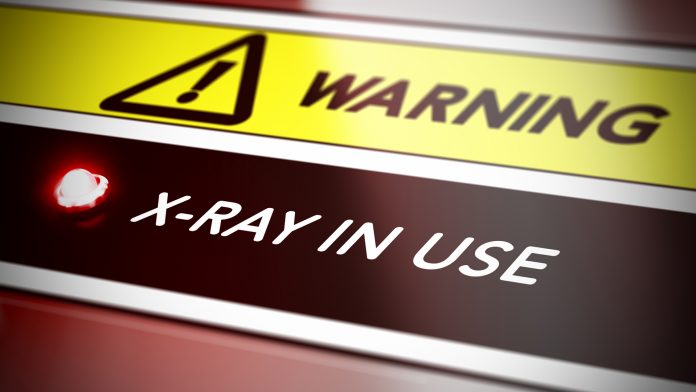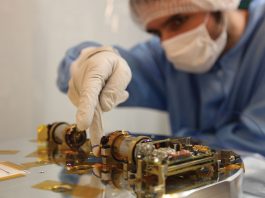Innovation News Network explores the positive uses of radiation in healthcare and the negative effects caused by extreme exposure.
Radiation is a fact of life; it is all around us, and always has been. We experience radiation from our environment – the rocks, soil, water, and even the air we breathe; as well as from man-made sources, such a nuclear power plants, X-rays and other health-related applications, and nuclear fall-out from things like weapons testing; as well as from space (from cosmic rays). Radiation levels vary from location to location – depending on, for instance, altitude (the higher the location the less it is protected from cosmic rays by the atmosphere), or on the type of rocks that are present, or even the type of materials used in the built environment. The World Nuclear Association points out, for instance, that many buildings made from granite, which contains uranium, are radioactive, and so if the US Capitol Building in Washington, D.C. were a nuclear facility, it would not have been licensed due to the radiation levels the buildings gives off.1
Radiation occurs when atoms within a nucleus spontaneously disintegrate (known as radioactivity), with the energy emitted being a form of ionising radiation. As the World Health Organization (WHO) explains, ‘unstable elements which disintegrate and emit ionising radiation are called radionuclides’, and ionising radiation ‘travels in the form of electromagnetic waves (gamma or X-rays) or particles (neutrons, beta, or alpha).’2
According to the International Atomic Energy Agency (IAEA), ‘The common ionising radiations generally talked about are:
- Alpha radiation consists of heavy, positively charged particles emitted by atoms of elements such as uranium and radium. Alpha radiation can be stopped completely by a sheet of paper or by the thin surface layer of our skin (epidermis). However, if alpha-emitting materials are taken into the body by breathing, eating, or drinking, they can expose internal tissues directly and may, therefore, cause biological damage
- Beta radiation consists of electrons. They are more penetrating than alpha particles and can pass through 1-2cm of water. In general, a sheet of aluminium a few millimetres thick will stop beta radiation
- Gamma rays are electromagnetic radiation similar to X-rays, light, and radio waves. Gamma rays, depending on their energy, can pass right through the human body, but can be stopped by thick walls of concrete or lead
- Neutrons are uncharged particles and do not produce ionisation directly. But, their interaction with the atoms of matter can give rise to alpha, beta, gamma, or X-rays which then produce ionisation. Neutrons are penetrating and can be stopped only by thick masses of concrete, water, or paraffin.’3
Beneficial radiation
Despite the fact that we are all clearly surrounded by sources of ionising radiation, the amount we receive into our bodies is typically minimal – one unit of absorbed radiation dose is measured as a sievert (Sv), and radiation doses normally encountered are so low that they are usually expressed in millisieverts (mSv) or microsieverts (µSv).3
For many, ionising radiation has untold benefits – it is used in numerous medical applications, from X-rays, to ‘tracers’ in PET scans, to the treatment of different types of cancer, to a non-invasive alternative to brain surgery.1 And, of course, the levels of radiation that patients experience are low – a single chest X-ray will give about 0.2 mSv of radiation dose.3
Harmful radiation
That being said, ‘beyond certain thresholds, radiation can impair the functioning of tissues and/or organs and can produce acute effects such as skin redness, hair loss, radiation burns, or acute radiation syndrome. These effects are more severe at higher doses and higher dose rates. For instance, the dose threshold for acute radiation syndrome is about 1 Sv (1000 mSv).’2
Thankfully, incidences of exposure to this level of radiation are relatively rare – typically only being seen in atomic bomb survivors and those who experienced disasters at nuclear power plants, such as that which occurred at Chernobyl. Regarding the latter of these two disasters ‘some 24,000 people living within 15km of the plant received an average of 450 mSv before they were evacuated. A total of 5,200 PBq of radioactivity (iodine-131 equivalent) was released… Out of the 134 severely exposed workers and firemen, 28 of the most heavily exposed died as a result of acute radiation syndrome (ARS) within three months of the incident. Of these, 20 were from the group of 21 that had received over 6.5 Gy, seven (out of 22) had received between 4.2 and 6.4 Gy, and one (out of 50) from the group that had received 2.2-4.1 Gy. A further 19 died between 1987-2004 from different causes.’4
The World Nuclear Association also states that ‘since the accident in 1986, Chernobyl also resulted in about 6,500 thyroid [cancer] cases – which would have been prevented if the authorities had stopped contaminated foodstuffs from entering the food chain. These cases have, to date, resulted in 15 deaths.’1
According to the organisation, other than in the case of such disasters nuclear energy is safe, highlighting that more people die each day from the pollution caused by burning coal for fuel, than they do from all of the radiation effects caused by nuclear power plants annually combined.
Atomic weapons
When it comes to radiation exposure from atomic bombs, however, the effects are more pronounced given the massive doses of radiation people can be exposed to. Of course, only two such bombs have ever been dropped – those at Hiroshima and Nagasaki in Japan towards the end of the Second World War (although more than 2,000 nuclear test explosions have been carried out around the world since that time).5
Research has shown that many surviving inhabitants of the Japanese cities targeted by US nuclear weapons have since gone on to develop cancers: ‘Epidemiological studies continue on the survivors of the atomic bombing of Hiroshima and Nagasaki, involving some 76,000 people exposed at levels ranging up to more than 5,000 mSv. These have shown that radiation is the likely cause of several hundred deaths from cancer, in addition to the normal incidence found in any population. From this data the International Commission on Radiological Protection (ICRP) and others estimate the fatal cancer risk as 5% per sievert exposure for a population of all ages – so one person in 100 exposed to 200 mSv could be expected to develop a fatal cancer some years later.’4
Safety
The World Nuclear Association points out that ‘if there is no dramatic increase in people’s general radiation exposure, there is no evidence that health or genetic effects from radiation could ever become significant’.4 And yet this perhaps fails to take into account the near certainty that some people will experience this increased exposure. Whether that is via one of the almost inevitable accidents that will, at some point, take place at yet another reactor – many accidents are, unfortunately, unavoidable – or, in a truly worst case scenario, as the result of fall-out from an atomic weapon.
Nevertheless, the general consensus remains that outside of these extreme situations, it is the negative perceptions around nuclear radiation that result from such incidences that have a more damaging effect, with the World Nuclear Association arguing that ‘the socio-economic and psychological impacts of radiation fears in the aftermath of nuclear accidents have caused considerable suffering and deaths, much higher than the accidents themselves’, and that ‘contrary to public perception, nuclear power accidents have caused very few fatalities and the use of nuclear energy does not expose members of the public to significant radiation levels.’4
With an increasing shift away from fossil fuels and the lessons that have been learned from both the Fukushima and Chernobyl incidents as well as from WWII, one perhaps simply has to hope that, moving forwards, atomic energy will be used safely and only for peaceful purposes. After all, it looks as though it is here to stay, at least for some time. Radiation is, indeed, now a fact of life more than it has ever been.
References
- https://www.world-nuclear.org/nuclear-essentials/is-radiation-safe.aspx
- https://www.who.int/news-room/fact-sheets/detail/ionizing-radiation-health-effects-and-protective-measures
- https://www.iaea.org/Publications/Factsheets/English/radlife
- https://www.world-nuclear.org/information-library/safety-and-security/radiation-and-health/nuclear-radiation-and-health-effects.aspx









